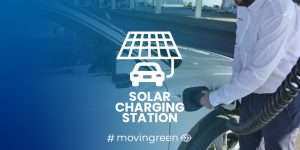At Top Cable we have already come a long way in facing up to our…
Energy performance of buildings Directive
Environmental responsibility is an increasingly necessary aspect. Planned programmes and actions are very important for the future. Aiming to achieve a fully decarbonised building stock by 2050, the Energy Performance of Buildings Directive (EPBD) contributes directly to the EU’s energy and climate goals.
MAIN ENERGY CONSUMER
Buildings are the single largest energy consumer in Europe. The building sector and the energy performance of buildings is therefore crucial to achieving the global energy and climate goals. 85% of EU buildings were built before 2000 and amongst those, 75% have a poor energy performance. Acting on the energy efficiency of buildings is therefore key to saving energy, reducing bills for citizens and small enterprises and achieving a zero-emission and fully decarbonised building stock by 2050. These facts, and those below, show the importance of the housing sector in overall energy consumption in the EU:
- Around 40% of energy consumed in the EU is used in buildings.
- Over 1/3 of the EU’s energy-related GHG emissions come from buildings.
- +/- 80% of energy used in EU homes is for heating, cooling and hot water.

LEGISLATIVE FRAMEWORK
To boost the energy performance of buildings, the EU has established a legislative framework that includes the revised Energy Performance of Buildings Directive (EU/2024/1275) and the revised Energy Efficiency Directive (EU/2023/1791). Together, the directives promote policies that will help:
- Aachieve a highly energy efficient and decarbonised building stock by 2050.
- Create a stable environment for investment decisions.
- Enable consumers and businesses to make more informed choices to save energy and money.
EPDB, THE EUROPEAN ENERGY PERFORMANCE OF BUILDINGS DIRECTIVE
The European commission has proposed a review of the energy performance of buildings Directive (EPBD). Fire safety is mentioned several times in the new EPBD. The main information that emerges is that energy renovation work is inseparable from the notion of fire safety. More particularly, it can be noted that the installation of major electrical loads and electricity production such as heat pumps, solar installations, batteries and electrical vehicle charging points, require specific attention.
Following the legislative process, the final text was adopted by the Council on 12 April 2024. The text was published in the Official Journal on 8 May 2024 and entered into force 20 days thereafter. The implementation of renovation projects incentivised by this revision will synergise with funds such as the Recovery and Resilience Fund or the Social Climate Fund, as well as traditional funding under the Multiannual Financial Framework.
The National Building Renovation Plans (NBRP) shall provide recommendations to implement or reinforce existing schemes. National electrical inspection regimes should follow existing national wiring rules and ensure regular inspections of existing installations and when any major electrical equipment is installed (electric vehicle charging point, photovoltaic panel, heat pump, battery storage system).
RENOVATION PASSPORT
In order to monitor and control the correct application of the regulations, the following will be created a renovation passport. Is a tailored roadmap for the deep renovation of a specific building in a maximum number of steps that will significantly improve its energy performance (Art 2.19 definition).
Renovation passports shall be linked to electrical inspection reports. One possibility is to do it via the digital building logbook (DBL). Art 12 section 8 requires Member States to ensure that the renovation passport is stored in, or can be accessed via, where available, the digital building logbook, and electrical inspection reports have been identified as a relevant feature of the DBL.
This electrical inspection report will also form the basis to inform about electrical safety requirements into the Annex VIII.2.c. Independent modules on: v. Technical and safety requirements for materials and works.
You can learn more about the energy performance of buildings directive here.

COMMITTED TO THE ENVIRONMENT
At Top Cable we believe in the need to take care of the environment, which is why we have carried out different actions to reduce our energetic impact. All of them are included in the #movingreen campaign of which you can find out more details in this link.




